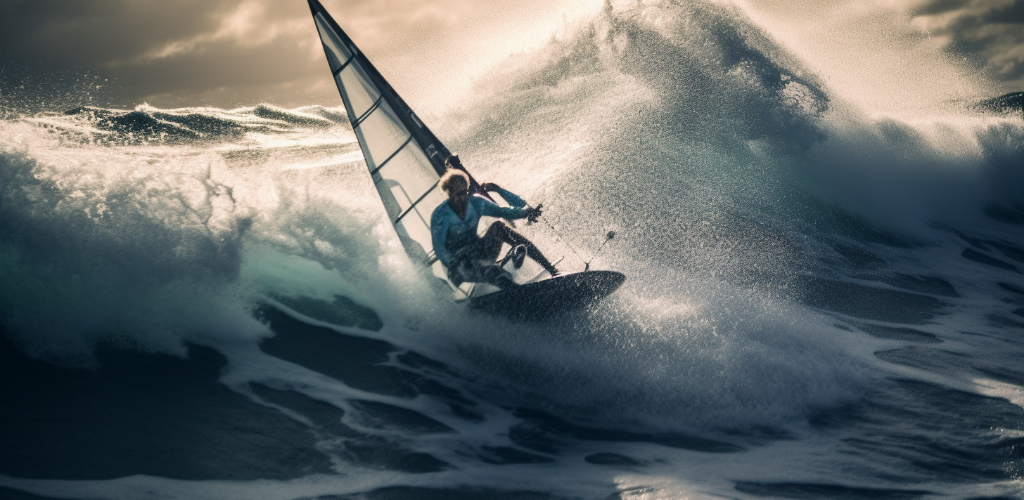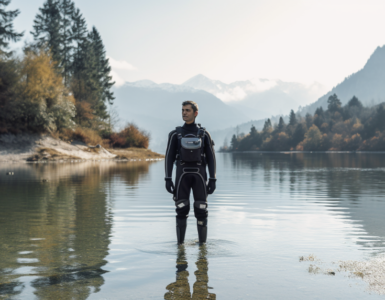Windsurfing, a popular water sport, has been capturing the hearts of thrill-seekers and water enthusiasts for decades. It combines the thrills of sailing and surfing, offering an exhilarating experience unlike any other. But the question remains, is windsurfing hard? In this post, we’re going to explore this question in depth, discussing various aspects of this sport that contribute to its difficulty level.
Understanding Windsurfing
Windsurfing was born in the mid-20th century and has been evolving ever since. This sport involves riding on a board while holding onto a sail that is attached to a mast. The sail is maneuvered to catch the wind, propelling the board forward.
Over the years, windsurfing has branched out into different styles, such as freestyle, wave, racing, and more. Each style requires its own unique set of techniques and skills, adding layers of complexity to the sport.
The Skill Set Required for Windsurfing
Windsurfing is not just about hopping on a board and letting the wind carry you. It requires a specific set of physical and mental skills. Physically, you need balance to stay upright on the board, strength to control the sail, and agility to maneuver the board. Mentally, you need focus to read the wind and waves, and fearlessness to take on the challenges that the ocean presents.
Does this mean windsurfing is hard? Well, it certainly seems so. But does that mean it’s not worth trying? Absolutely not! The thrill and satisfaction that come from mastering this sport are worth every bit of effort.
The Learning Curve of Windsurfing
Windsurfing, like any new skill, requires a certain amount of time and dedication to master. How long it takes to become proficient depends on many factors, such as your physical condition, your mental grit, and of course, how much practice you put in. But isn’t that part of the appeal?
When you first start out, you may find windsurfing somewhat challenging. This is perfectly normal, and it’s part of the journey. Remember, every expert was once a beginner, right?
Beginner’s Struggles
One of the most common issues beginners face is maintaining balance on the board. With the wind in your sail and the waves beneath your feet, it can feel like a juggling act. But don’t worry, it’s all part of the fun!
Another common struggle is controlling the sail. It’s not just about holding on, it’s about understanding the wind and using it to your advantage. This can seem daunting at first, but with practice, it becomes second nature.
Maneuvering the board is another hurdle beginners must overcome. Turning and steering require a combination of balance, strength, and sail control. But remember, every time you fall, you’re one step closer to mastering the art of windsurfing.
Progress Over Time
It’s important to remember that windsurfing is a journey, not a destination. Over time, with consistent practice and a little patience, you’ll find yourself making progress.
You’ll start to notice your balance improving, your control over the sail becoming more precise, and your ability to maneuver the board increasing. It’s a truly rewarding experience to see your progress in action. So, stick with it, and you’ll reap the rewards in no time.
Equipment Essentials for Windsurfing
Now that we’ve covered the learning curve, let’s talk about equipment. After all, the right tools can make all the difference, right?
When it comes to windsurfing, the quality and suitability of your equipment can greatly affect your learning experience. A good board and sail can make the process smoother and more enjoyable, whereas ill-fitting or substandard gear can add unnecessary difficulty.
For beginners, a larger board with more volume is generally recommended. This provides greater stability and makes it easier to balance. As for sails, a smaller, lighter sail is usually easier to handle for novices.
Remember, investing in good quality equipment doesn’t just make learning easier, it also ensures your safety on the water. So, when it comes to choosing your gear, don’t skimp on quality. After all, your safety and enjoyment are worth it, aren’t they?
The Physical Demands of Windsurfing
Anyone who has ever tried their hand at windsurfing can attest to the fact that it is not a sport for the faint-hearted. Why is that, you may ask? Well, it’s largely due to the significant physical demands this sport places on your body.
At the forefront of these demands is cardiovascular fitness. Windsurfing is a sport that requires constant movement and adjustment. Paddling, maintaining balance, controlling the sail – all of these require a level of cardiovascular endurance that can only be achieved through consistent training. It’s not just about muscle strength, but also about how efficiently your heart and lungs can supply oxygen to those muscles. Sounds challenging, right?
Next up is core strength. When you’re out there on the water, battling the waves and wind, your core is your best friend. It helps you maintain balance, control the board, and steer the sail. Without a strong core, you would find it incredibly difficult to stay upright on the board, let alone maneuver it effectively.
Lastly, muscle endurance plays a crucial role in windsurfing. The sport demands prolonged physical effort, meaning that your muscles need to be able to withstand this extended strain. This is particularly true for the muscles in your arms and legs, which are constantly at work when windsurfing.
Importance of Safety Measures
Given the physical demands and inherent risks associated with windsurfing, it’s crucial to prioritize safety. After all, it’s better to be safe than sorry, right? But what exactly does this entail?
Firstly, you should always ensure you have the right equipment. This includes a suitable windsurfing board, a properly sized sail, a wetsuit for protection against the cold, and a life jacket for flotation. Not only can these items make windsurfing easier, but they can also significantly reduce the risk of injury.
Additionally, it’s important to be aware of the conditions. This means checking the weather forecast, understanding the wind and wave conditions, and knowing where the safe zones are in case of an emergency. It’s always better to postpone your windsurfing session if the conditions are unfavorable.
Lastly, consider taking a safety course or hiring a professional instructor. They can provide you with valuable insights and techniques to help keep you safe on the water. Remember, knowledge is power!
| Safety Measure | Importance |
|---|---|
| Proper Equipment | Ensures optimum performance and reduces the risk of injury. |
| Weather Awareness | Helps avoid dangerous conditions that could lead to accidents. |
| Safe Zones Knowledge | Provides a fallback in case of emergencies. |
| Safety Course/Professional Instruction | Provides valuable knowledge and techniques to ensure safety on the water. |
Comparison with Other Water Sports
Ever wondered how windsurfing stacks up against other water sports in terms of difficulty? Let’s take a look.
- Surfing: While both surfing and windsurfing require balance and strength, windsurfing adds the complexity of managing the sail, making it somewhat more challenging.
- Kayaking: Unlike windsurfing, kayaking doesn’t require as much balance. However, it does demand a great deal of upper body strength and endurance.
- Stand Up Paddleboarding (SUP): Although SUP also requires balance, it lacks the element of wind control, making it somewhat easier than windsurfing.
- Kitesurfing: Kitesurfing, like windsurfing, involves harnessing the power of the wind. However, managing the kite can be a bit more complex than handling a windsurfing sail.
Conquering the Waves: Making Windsurfing Easier
Feeling a bit intimidated by the challenge of windsurfing? Don’t worry! Here are some tips and tricks that can make the journey easier for beginners.
- Start Small: Begin with a small sail and a large board. This combination is easier to handle and perfect for beginners.
- Use the Correct Stance: Make sure your feet are positioned correctly on the board and your back is straight. It will help you maintain balance and control the sail better.
- Learn to Fall: Falling is part of the learning process. Learn to fall safely to avoid injuries.
- Practice Makes Perfect: The more you practice, the better you’ll get. So, don’t get disheartened by initial failures.
Final Thoughts
In conclusion, while windsurfing can indeed be challenging, it’s not an insurmountable task. Sure, it requires a unique set of skills, a good level of physical fitness, and a fair amount of practice. But with the right mindset, proper training, and adherence to safety measures, you can master this thrilling water sport. Remember, every expert windsurfer was once a beginner who refused to quit. So, are you ready to take on the waves?




